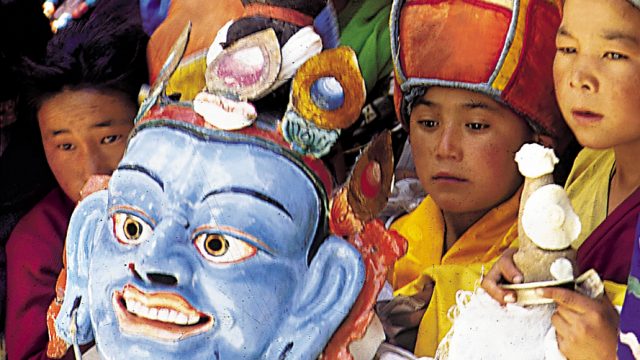In extreme climatic conditions such as these, cultural heritage has often simply meant the way people adapt to their altitude, seasonal patterns and ecology. Scarcity of rain and arable land has meant that village houses often cling to hill sides above the fields so as to not waste fertile soil. Ladakh’s small, white-washed houses with flat roofs belong to a place that sees no rain (so no Himalayan sloping roofs needed) but those flat roofs can store ample animal fodder for the unproductive winter months. Long winters also mean extended wedding celebrations that go on for days, and feasts and festivals galore. Just as they mean vast warm kitchens with ample seating, in which the family and guests can sit sipping their chhang or gur gur cha for hours.

In a context of scarcity of resources, says scholar Helena Norberg-Hodge, “What cannot be eaten can be fed to animals, what cannot be used as fuel can fertilise the land… Ladakhis patch their home-spun robes till they can be patched no more… all shrubs or bushes serve some purpose (fuel, fodder, roof material, fence, dyes, basket weaving and so on)… Even human faeces was not wasted.” In some gompas or more remote restaurants, you can still see the traditional dry latrines, in which sand and kitchen ash was used to cover up the waste, which fell down below, dried, and was later converted to fertiliser.

Also, watch out for how Ladakhi fields are irrigated by water channels cut into the mountain slopes, channels which carry melting snow waters from long distances to these oases fields. Farmers water their patch and then block the channel with stones so the water flows on into neighbouring fields.




